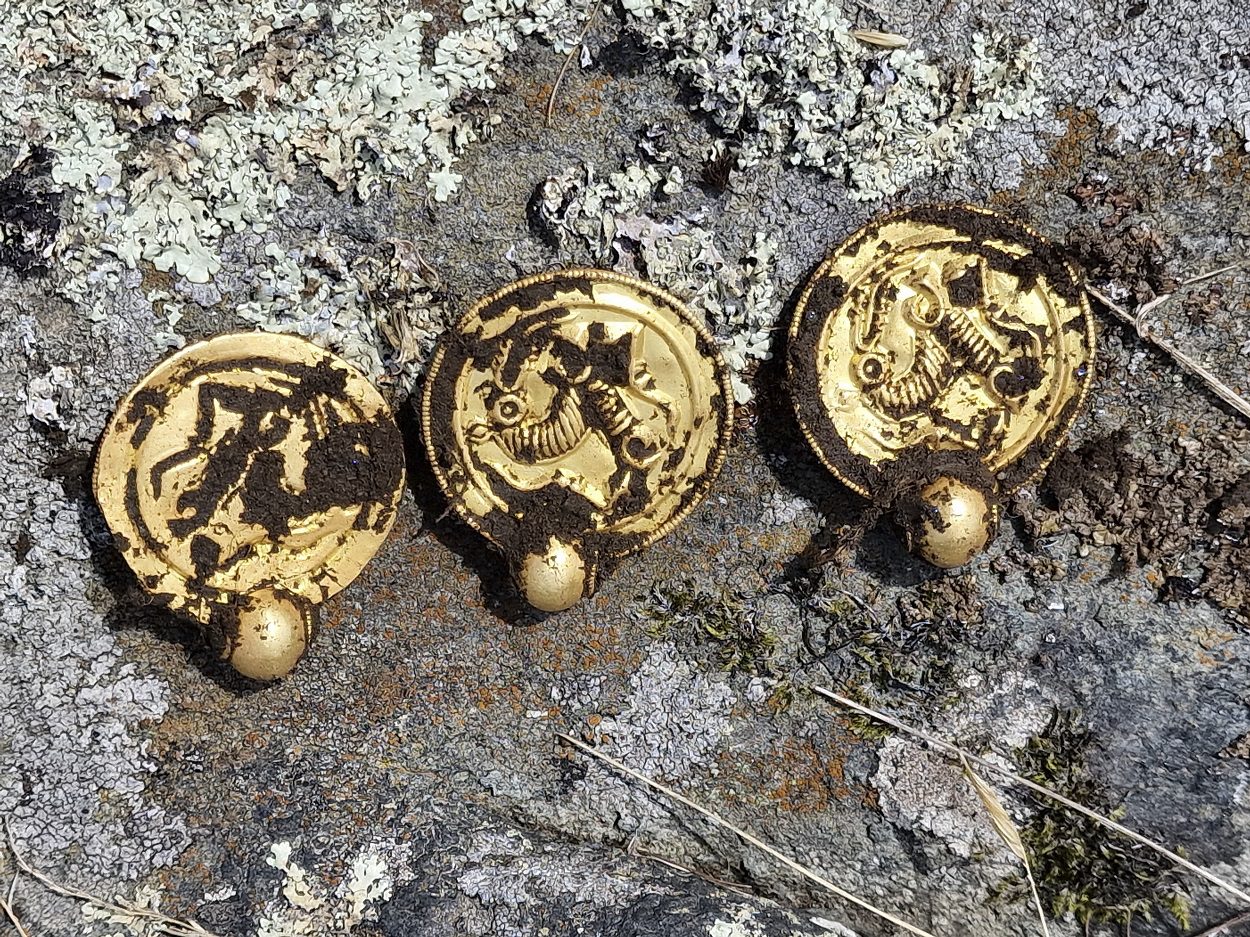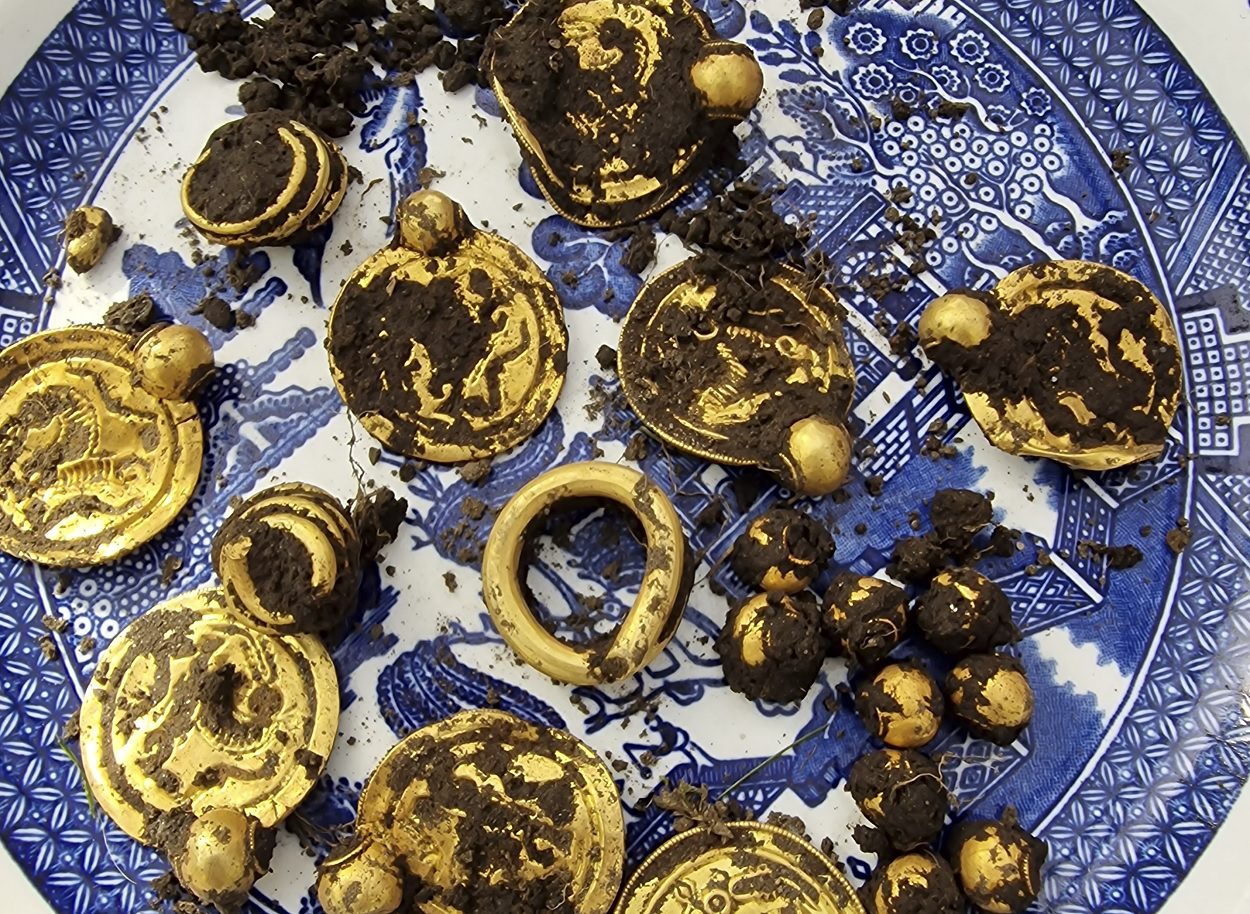A gold treasure hoard has been discovered by a metal detectorist on the island of Rennesøy in Stavanger, Norway.
The discovery was made by Erlend Bore on private land with the approval of the landowner, resulting in nine coin-like gold pendants with rare horse symbols, in addition to ten gold pearls and three gold rings being unearthed.
Mr Bore contacted the local county council, who subsequently notified archaeologists from the Archaeological Museum / Jernaldergården University of Stavanger.
Using a metal detector is legal under Norwegian law as long as the landowner has given permission and the use complies with the Norwegian Cultural Heritage Act 1978. All objects dated before the year 1537, and coins older than the year 1650, are considered state property and must be declared to the relevant authorities.

According to associate professor Håkon Reiersen at the Archaeological Museum, the gold pendants date from around AD 500 during the time of migration in Norway. Although the pendants look like coins, they are in fact “bracteaters”, a decorative type of jewellery worn in the 5th to 7th century AD. The gold for bracteates mainly came from coins paid as peace money by the Roman Empire to their Northern Germanic neighbours.
“The nine bracteates and gold pearls have formed a very showy necklace. The jewellery was made by skilled jewellers and was worn by society’s most powerful. It is very rare to find so many bracteaters together. In Norway, no similar discovery has been made since the 19th century, and it is also a very unusual discovery in a Scandinavian context,” says Professor Reiersen.
Professor Sigmund Oehrl at the Archaeological Museum has stated that the bracteates of this type are very rare and depict a previously unknown horse motif. Most bracteates show the image of Odin healing a horse belong to his son, which in mythology was seen as a symbol of renewal and resurrection to give the wearer protection and good health. On the Rennesøy bracteates, however, only the horse is depicted.
Header Image Credit : Erlend Bore





